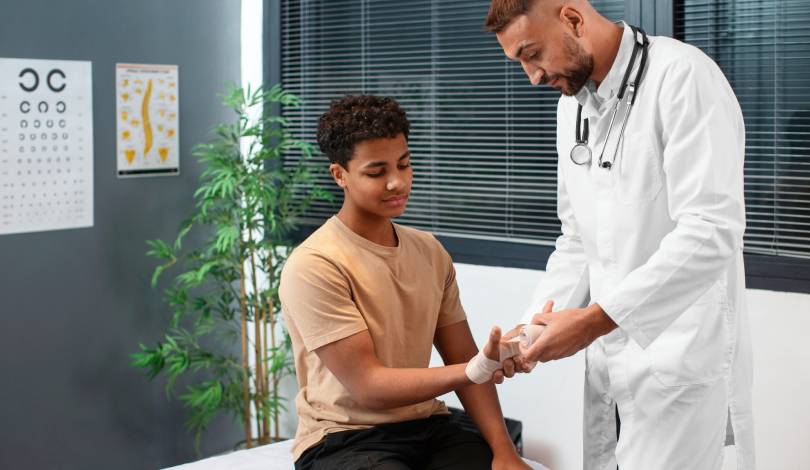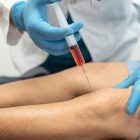Synopsis
Finger pain may appear minor, but it can greatly limit everyday tasks such as gripping, writing, typing, or lifting objects. From arthritis to injuries and conditions like trigger finger, physiotherapy for finger pain provides a structured, non-invasive path to restore hand function. In this blog, we explore how finger physiotherapy after surgery, physio exercises for trigger finger, and physical therapy for arthritis in hands help relieve pain and improve joint flexibility. Learn how a personalised physio for finger pain plan helps manage stiffness, muscle imbalances, and repetitive strain injuries. We’ll also cover the use of physio finger exercises, broken finger physio strategies, and effective physiotherapy exercises for trigger thumb and finger arthritis. Whether you’re dealing with joint inflammation or recovering post-trauma, this blog offers valuable insight into regaining dexterity, strength, and comfort through dedicated physiotherapy for hands and fingers.
Table of Contents
- Why Finger Pain Needs Specialised Care
- Understanding Tennis and Golfer’s Elbow
- How Physiotherapy for Tennis Elbow Works
- Recovery After Fracture: Physio for Fractured Elbow
- Managing Chronic Pain: Golfer’s Elbow Physiotherapy
- Techniques in Physical Therapy for Tendonitis Elbow
- Stiff Elbow? Here's How Physiotherapy Helps
- Why Orthocure is the Right Choice for Elbow Physiotherapy
Why Finger Pain Needs Specialised Care
Fingers are involved in almost every functional activity, from buttoning a shirt to operating a smartphone. Pain, stiffness, or limited motion in the fingers can severely impact independence. Physiotherapy for finger conditions is often overlooked until daily tasks become impossible. Early attention with a focused physio for finger pain plan prevents long-term damage and facilitates faster recovery. Through customised therapy, even chronic or post-surgical issues can be managed effectively.
Common Conditions Treated Through Finger Physiotherapy
Physiotherapy for finger addresses conditions such as trigger finger, arthritis, fractures, tendon injuries, and overuse syndromes. Trigger finger, a condition where fingers get stuck in a bent position, responds well to non-surgical care through stretching and tendon gliding. Arthritis patients benefit from mobility restoration and pain relief strategies. Fracture recovery requires precise broken finger physio protocols to prevent joint stiffness and restore grip. A tailored plan ensures full recovery of motion and coordination.
Physio for Finger Pain - Early Intervention Matters
Pain in the fingers should not be ignored, especially if it interferes with daily use. Physio for finger pain includes pain management techniques, joint mobilisation, and nerve gliding exercises. Early diagnosis prevents progression and allows for faster improvements. Techniques such as wax therapy and ultrasound may be used to reduce inflammation. Delayed treatment can lead to permanent joint damage or compensatory strain in the wrist and forearm.
Understanding Physiotherapy Exercises for Trigger Finger
Trigger finger affects the flexor tendons, often causing snapping or locking of the digit during movement. Physiotherapy exercises for trigger finger involve tendon glides, active flexion-extension drills, and resistance-free stretching. Therapists also apply friction massage and taping for joint support. Splints may be used during early stages to rest the tendon. Regular sessions help release the tendon sheath and improve movement without the need for injections or surgery.
Physical Therapy for Arthritis in Hands and Fingers
Physical therapy for arthritis in hands focuses on joint preservation, pain relief, and maintaining range of motion. Gentle mobilisation, isometric exercises, and hydrotherapy are commonly used. Education on joint protection and assistive tools helps reduce stress during tasks. Strengthening intrinsic hand muscles enhances grip. Long-term finger physiotherapy reduces swelling, slows joint degeneration, and enables patients to manage symptoms independently.
Recovery and Strengthening with Broken Finger Physio
Broken finger physio begins once bone healing is confirmed. Therapy starts with passive mobilisation and gradually incorporates active exercises. Focus is placed on regaining full extension and flexion without pain. Resistance bands, grip trainers, and dexterity drills improve strength. Broken finger physio also addresses adjacent joint movement to prevent wrist and elbow stiffness. Timely therapy ensures the hand regains full function and avoids post-fracture complications.
How Physio Finger Exercises Improve Dexterity and Grip
Physio finger exercises are crucial for restoring control and precision. Techniques include ball squeezes, putty exercises, finger lifts, and opposition drills. These exercises strengthen tendons, improve coordination, and enhance joint mobility. Patients with reduced grip or fine motor skills benefit significantly. Over time, these routines help recover pre-injury capabilities and support hand functionality in both personal and professional settings.
How Orthocure Helps You Regain Hand Function
Orthocure Clinics and Gyms specialise in musculoskeletal recovery using their structured 4 Point Protocol: Diagnosis, Pain Relief, Structural Correction, and Maintenance. Their expert physiotherapists offer advanced techniques and equipment for finger physiotherapy, trigger finger treatment, and arthritis care. Whether you’re recovering from injury or managing a chronic condition, Orthocure provides custom care plans, progress tracking, and holistic support. Their integrated approach ensures faster recovery, improved mobility, and long-term finger health.
FAQs
What are the common causes of finger pain that require physiotherapy?
Common causes include trigger finger, arthritis, fractures, tendon inflammation, and repetitive strain. These conditions result in stiffness, pain, and reduced function. Physiotherapy addresses these issues through targeted exercises, manual therapy, and assistive tools. Early intervention helps prevent permanent damage and restores everyday hand use. A tailored treatment plan ensures comprehensive recovery.
How do physiotherapy exercises for trigger finger work?
These exercises promote tendon mobility and reduce sheath inflammation. They involve active stretching, tendon glides, and light resistance drills. Therapists may also apply manual techniques and recommend splinting. Over time, exercises reduce stiffness and prevent the finger from locking. Most patients see improvement without surgical intervention.
Is physiotherapy effective for arthritis in hands and fingers?
Yes, it helps manage pain, improve joint flexibility, and maintain hand function. Techniques include hydrotherapy, mobilisation, and muscle strengthening. Patients also learn joint protection techniques and tool usage. Regular therapy can delay disease progression and enhance quality of life. Long-term benefits include better grip and independence in daily tasks.
What does broken finger physio include?
It includes joint mobilisation, strength building, and coordination exercises. Therapy begins once the fracture has healed and focuses on regaining motion. Tools like resistance putty and hand grippers are used. Broken finger physio also addresses surrounding joint stiffness. With proper guidance, full recovery is achievable in most cases.
How do physio finger exercises improve grip strength?
These exercises target intrinsic hand muscles and tendons, enhancing control and power. Ball squeezes, putty rolls, and finger resistance bands are commonly used. They improve blood flow, muscle tone, and finger agility. With regular practice, patients notice better grip strength and hand coordination. This supports tasks like lifting, typing, and handwriting.





